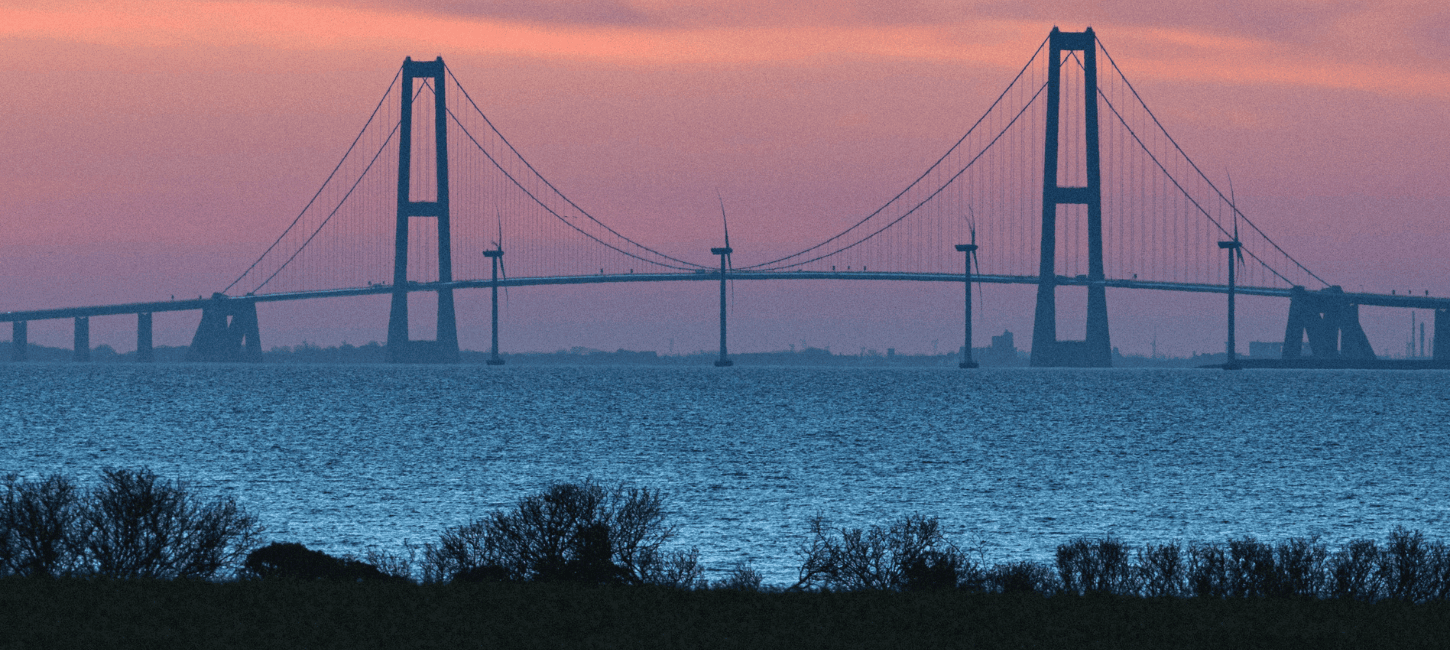
How to get to Fyn and the Islands
Set in the heart of Denmark, Fyn is easy to reach by car, train, ferry, or boat. On this page, you’ll find all the essential information you need to travel to Fyn and the islands no matter where your journey begins.
Fyn sits at the centre of Denmark as a natural crossroads between Jutland, Zealand, and the archipelago. Thanks to bridges, ferries, and reliable rail connections, the island is easy to reach from every direction.
This page gives you a clear overview of every way to get to Fyn and the islands, helping you plan a smooth and stress-free journey.
Driving to Fyn by car
If you’re arriving in Denmark by car, Fyn is easily accessible via the E20 motorway, which connects Jutland in the west with Zealand in the east. The island is reached via the free Little Belt Bridge from Jutland, while the Great Belt Bridge between Zealand and Fyn is subject to a toll. Buying a digital ticket or a BroBizz in advance can save time and help you avoid queues. More information and online booking can be found on the Great Belt Bridge's booking website.
Another scenic option is to travel via the island of Als in Southern Jutland and take the ferry from Fynshav to Bøjden in southern Fyn. The crossing takes about 45 minutes, and tickets are available from Alslinjen's own website.
Travelling to Fyn by train: simple, comfortable, and climate-friendly
Most international and domestic train connections to Fyn arrive in Odense, the island’s largest city. Trains run across Jutland, over the Little Belt Bridge, and continue eastward to Zealand and Copenhagen.
For travellers coming from abroad, international journey planners such as Rail Europe, Deutsche Bahn, or Omio make it easy to check routes, prices, and connections to Denmark.
Travelling by train is a comfortable and sustainable alternative to driving: you can reserve seats, bring your bike for a small fee, and many trains offer family areas, power outlets, and plenty of space for luggage and pushchairs.
For travel within Denmark, including onward journeys on Fyn and to the surrounding islands, you can plan your route on Journeyplanner.
Flying to Fyn and the Islands
Although there is a small airport near Odense named after Hans Christian Andersen, there are currently no direct commercial flights to Fyn. The best way to reach the island by air is to fly to either Billund Airport in Jutland or Copenhagen Airport on Zealand.
From Billund, buses run to Vejle and Kolding, where you can continue by train to Fyn. Timetables and tickets are available on the Billund Airport website or at Journeyplanner.
From Copenhagen Airport, you can take a direct train to Odense or travel by Metro to Copenhagen Central Station and choose from several daily departures. The IntercityLyn trains offer the fastest connections. Schedules and tickets are available on Danish Railways Services' (DSB) website and Journeyplanner.
Travelling to Fyn by long-distance bus - convenient and affordable
Long-distance buses offer an easy and often budget-friendly alternative to train travel. Several international routes connect Northern Europe with Odense Central Station, the main transport hub on Fyn. From here, you can continue your journey across the island by regional train or bus, with convenient connections to coastal towns and ferry ports serving the islands.
Most long-distance buses offer comfortable seating, free Wi-Fi, power outlets, and the option to bring bicycles or extra luggage.
Timetables and tickets are available through operators such as FlixBus. If you want to compare international routes, platforms like Omio or Rome2Rio provide a useful overview of providers, departure times, and travel options.
Sail to Fyn and the islands
Of course you can also arrive to Fyn and the islands by boat.
The South Funen Archipelago is known for short distances and calm waters perfect for island-hopping. You can sail to Fyn, Ærø, Langeland, and the surrounding islands directly from Northern Germany or through Danish waters.
The area forms part of a UNESCO Global Geopark shaped by ice, sea, and time. An exceptional sailing landscape of around 96 islands and islets still defined by nature’s rhythms.
If you’d like to plan your route in advance, VisitFyn offers an overview of all marinas and harbours on Fyn and the islands, including information about facilities, locations, and services. You can also switch to the map view for an interactive overview.
This article was last updated in November 2025.
If you didn’t find all the information you need, just write to us at visitfyn@destinationfyn.dk — we’re always happy to help.